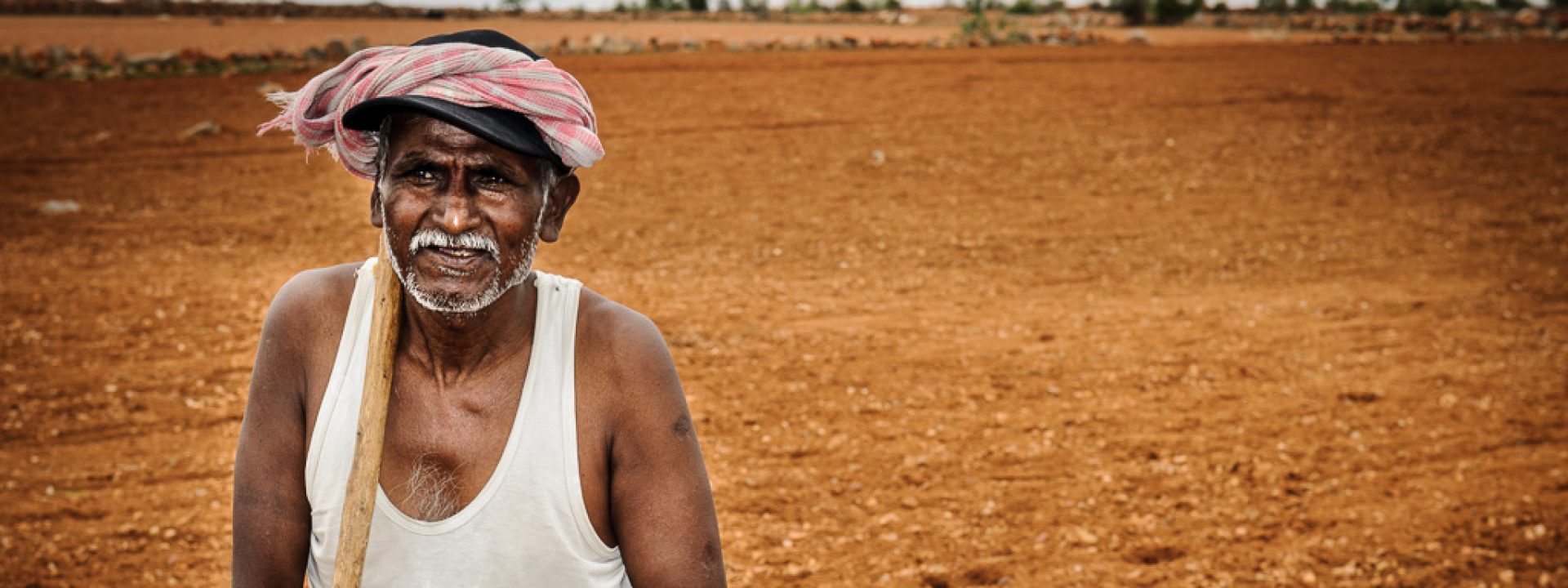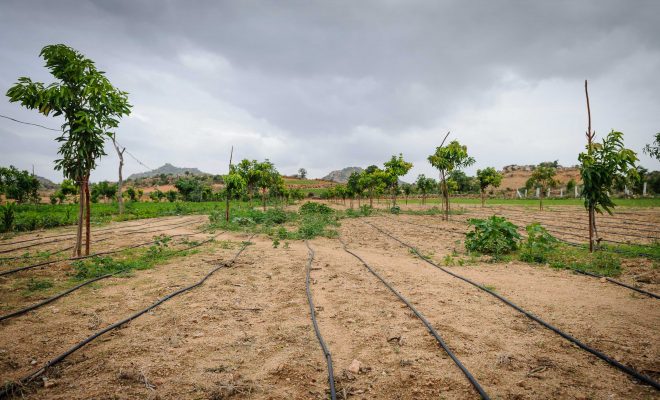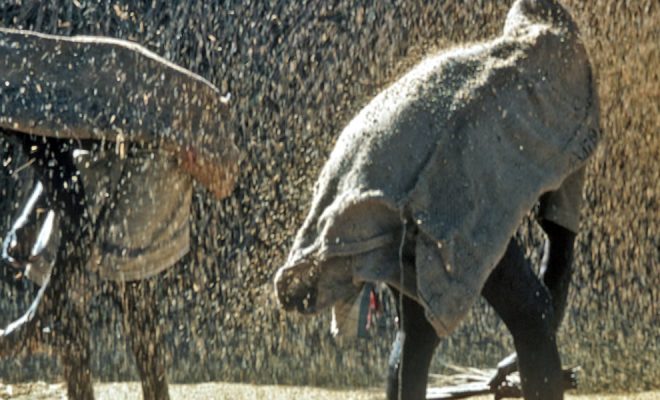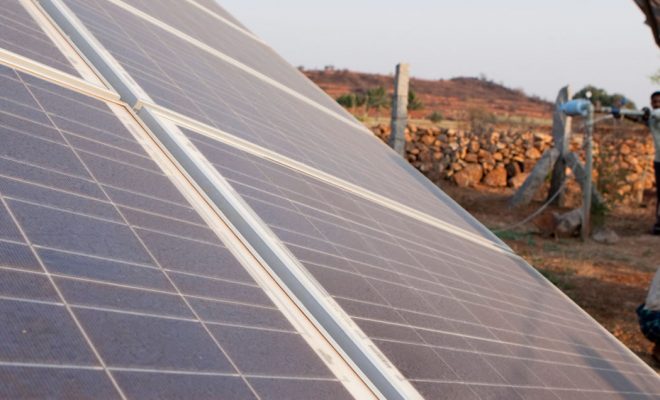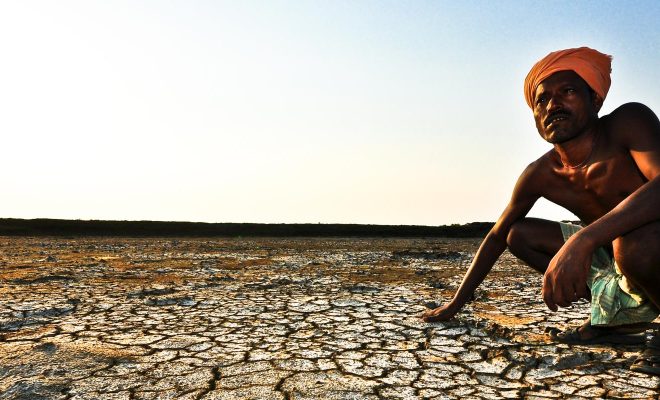In 2009, the conclusions of a study published in the digital edition of the magazine Nature raised alarm among hydrologists in India and the FAO analysts: the aquifers of the Ganges upper basin were decreasing their level at a rate of 33 cm every year. The study also concluded that 108 cubic kilometers of ground water had vanished from the aquifers of that region between 2002 and 2008. This is a huge quantity, the equivalent to three times the amount of water dammed at Lake Mead by the Hoover Dam, which is the largest water reserve in the United States.
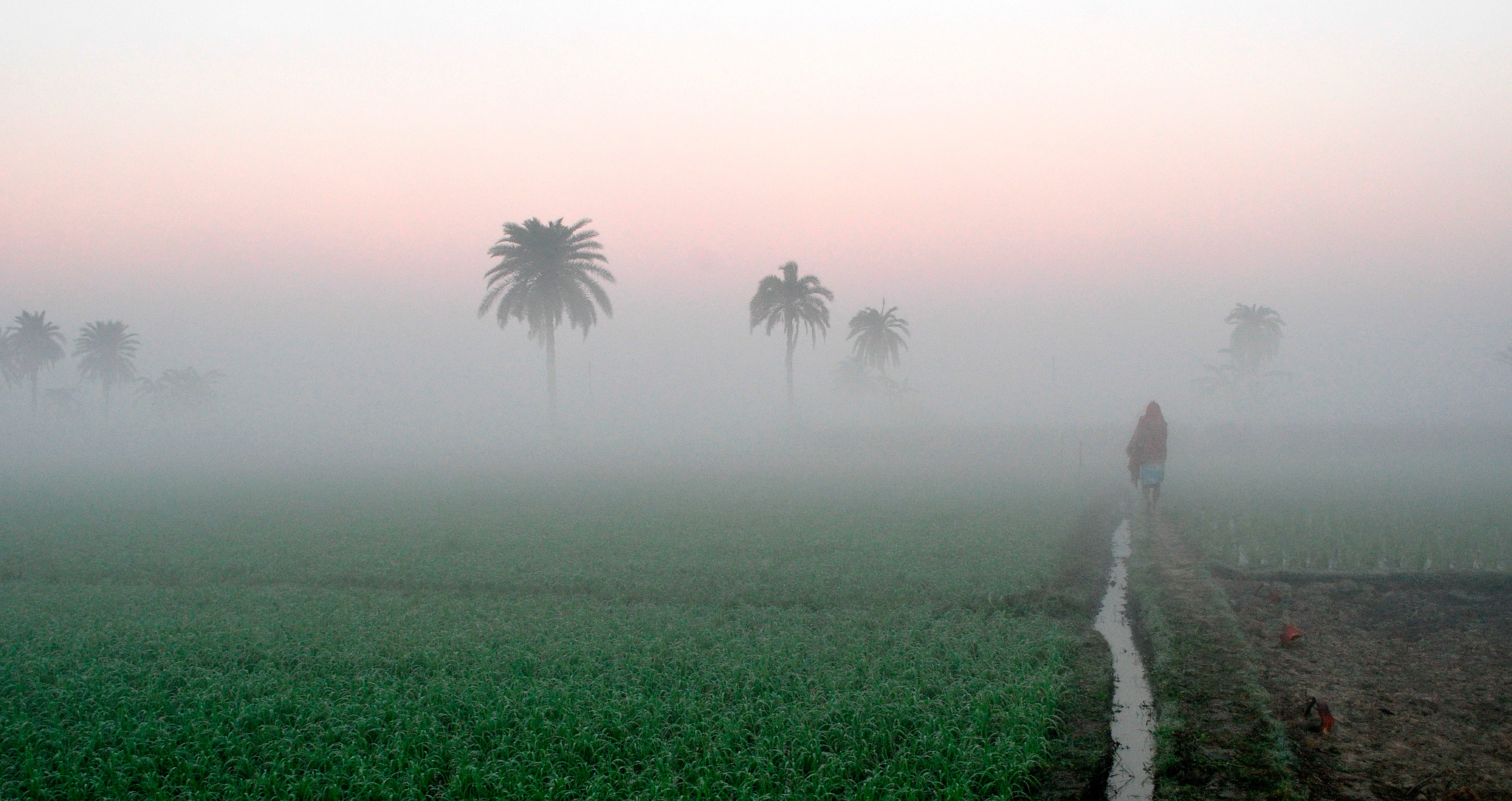
Crops in Ruppur, Nadia Dist, West Bengal. India.
©Abhijit Kar Gupta.
The study revealed the information obtained by the GRACE (Gravity Recovery and Climate Experiment) satellites, which by means of the detection of differences in the terrestrial gravity caused by the variations in the water masses, had been able to recreate a chronology of the changes in the storage of ground water. This was the first time that satellite technology, based on GPS and on microwave emissions, was able to map ground water, obtaining valuable information and therefore opening new perspectives for water management, the forecast of famine and the fight for the adaptability to climate change.
Underground drought
However, the study was only providing scientific confirmation to something millions of Indian farmers of other regions of the country had already verified: their modest and outdated water pumps were reaching increasingly less ground water, which had descended to a depth of 26 meters on average, and many of the wells had dried up after having had to dig deeper again and again. This fall has increased in the areas with greater agricultural operation and dependence on monsoon rains.
The ground water reserves in India are running out. A report from the World Bank in 2016 assured that the extraction of underground water for agricultural purposes in India had increased seven-fold in the last 50 years. The drilling of wells, which increased from less than a million in 1960 to 19 million in 2000, notably contributed to alleviate poverty, but has caused a severe tension in the subsoil in some areas, where water does not regenerate and many wells dry up. Nowadays, 61.6% of the irrigation water in India has an underground origin, a proportion that has increased in comparison with the use of water from rivers or lakes. There is another fact that proves the unsustainability of the situation: India extracts more ground water every year than the United States and China combined. This is a situation that needs to change.
The overexploitation of an aquifer takes place when the total extraction of water exceeds the actual refill; the latter comes primarily from rain water and in the case of the northern basin of the Ganges, also from melt water. In India, as in most overexploited aquifers around the world, like the ones in California, Spain and Italy, among others, the decrease in rainfall and deforestation are the key factors that are added to the increase in the water extraction.
There are increasingly more studies that classify this situation as very serious in the areas that suffer overexploitation. Different reports from NASA and from universities such as the one in Utrecht assure that the water reserves in the upper Ganges basin could collapse between 2040 and 2060, something that would constitute a socioeconomic catastrophe with incalculable consequences.
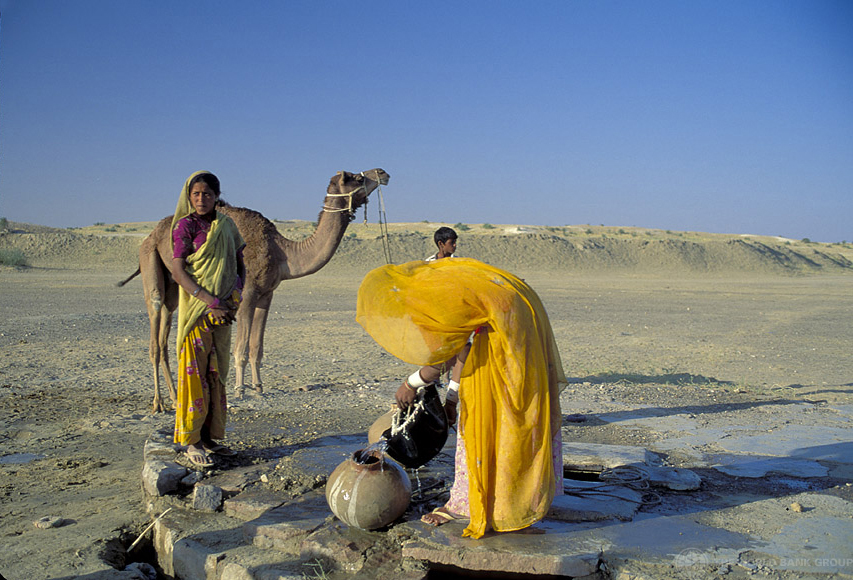
Women extracting water from a well in a semi-desert area in India.
© Photo- World Bank / Curt Carnemark.
Fewer monsoons and fewer glaciers
Most of the Indian territory depends on the summer monsoon for the refill of the aquifers. According to AQUASTAT this humid season discharges 80% of the 3.560 km3 of annual rainfall over India (in Spain, 322 km3). There are also great geographical differences when it comes to monsoons: the north-east of the country receives much more rainfall than the other regions, which suffer the uncertainty of large periods of drought, like the last one in 2016.
According to the Assessment Report (AR5) of the Intergovernmental Panel on Climate Change (IPCC), there is a forecast of a decrease in precipitation and an increase in the number of days the summer monsoons are interrupted. Climate change also comes with bad omens for the refill of Indian aquifers.
Bad news has also reached the Himalaya glaciers in this last decade.
In particular, the Himalayan glaciers that feed the gigantic Ganges basin, with an area of 907,000 km² and where 8% of the world population lives, show a significant decrease in the ice volume in the peaks of the mountain range, which has also affected the refill of the water table of the basin.
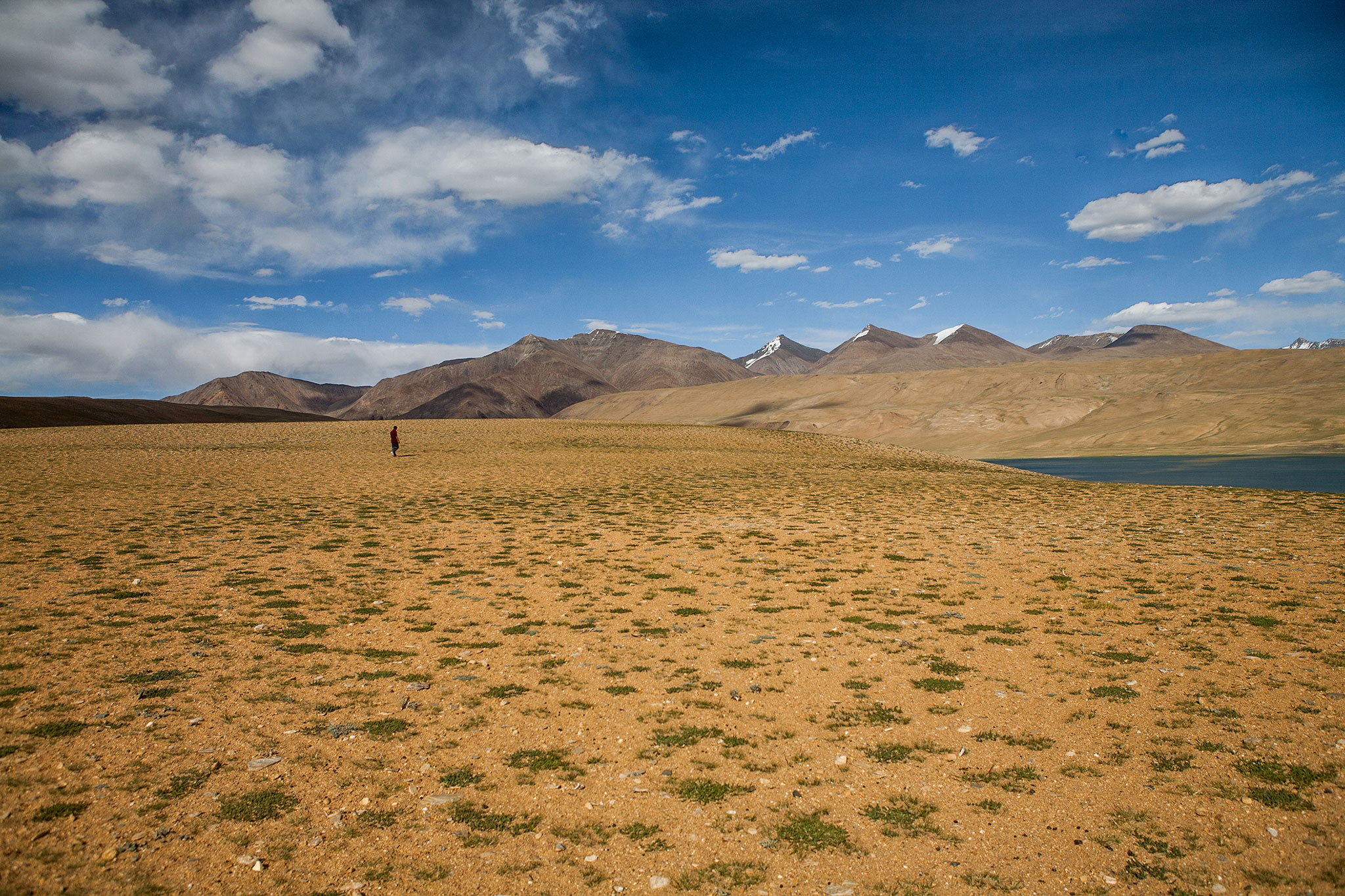
Snowy peaks at Tso Kyogar, Ladakh. India.
©sandeepachetan.com.
Vulnerability resides in the countryside
India needs to stop this internal drought. With over 1.335 billion inhabitants, it is the second most populated country on Earth, and it will probably reach the demographic leadership overtaking China by 2030. In India the total arable land reaches approximately 183 million hectares, over 55% of its total surface. This land absorbs 91% of the water extracted in the country, well over the world average, which is 69%.
The farmers, which are half of the labor force in India and 15% of its GDP, work in a total arable area of approximately 183 million hectares, over 55 per cent of the total surface of the country, and they are also the ones who accumulate greater pockets of poverty.
Their vulnerability to the shortness of water is very high: over 330 million farmers (half of the population of Europe) were affected in 2016 by the worst drought registered in the country since the end of the nineteenth century. These episodes trigger the ruin of the poorer families that, urged by debts, have been obliged to migrate to the large cities where most of them end up crammed in shantytowns without the minimum conditions for a dignified life. Many have not been able to endure this and have taken their lives: in the last three decades, 300,000 farmers have committed suicide in all India.
The greatest hydrological challenge in the history of India
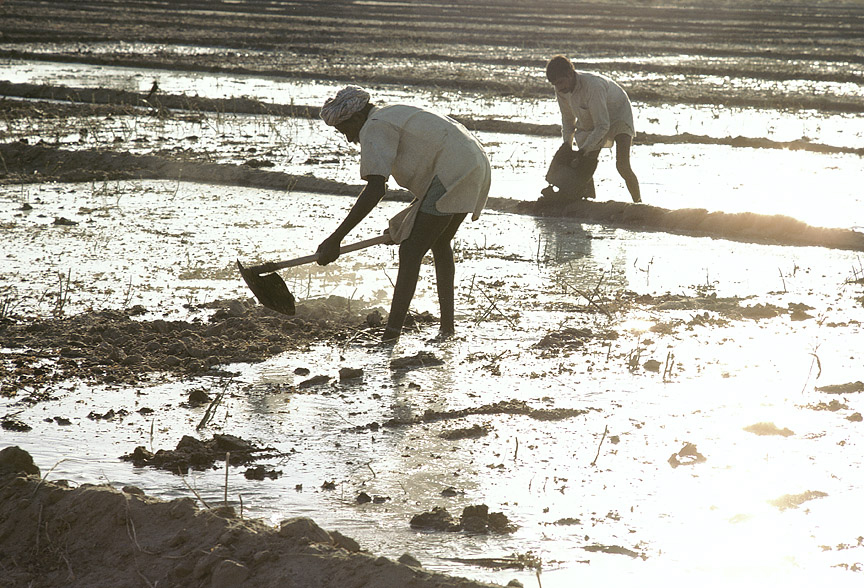
Workers in a rice field. India.
© Ray Witlin / World Bank.
The availability of water resources is full of severe uncertainties for the Asian giant. According to FAO, India will need to produce between 325 – 350 million tons of grain by 2025 in order to meet the requirements of food, fodder, forage and fiber. In order for this to be possible the total efficiency of irrigation needs to reach 50 per cent for the systems using surface water and 72 per cent for the systems with ground water. Right now the efficiency level reaches 40 per cent in the systems with surface water and only 40 per cent in those using aquifers. There is still a long way to go in order to reach the necessary level established by agricultural experts.
In order to face this enormous challenge, the greatest taken up by the country, it is essential to resort to information that allows an improvement of the management. The variations of the large aquifers may be detected via satellite, but this does not happen with the small underground masses. In order to control the variation of the levels a monitoring network is essential, which will allow the analysis of the decrease in volume, will identify the causes and apply management plans to avoid its overexploitation. To this regards, the Government has reacted and nowadays it has 2,500 monitoring networks, while in 1978 there were only 18. But as always happens in the world of water, technology assists with the solution but it is not the solution.
The main challenge faced by the country is to create an efficient management model that facilitates the investment in improving the efficiency in the use of underground reservoirs. To achieve this, the model needs to provide local solutions to the immense number of small farmers. To provide them with solutions that are feasible and sustainable is the foundation of success.
Reservoirs to regenerate aquifers and drip irrigation to improve efficiency
India is a civilization of ground water. For thousands of years, its inhabitants have developed ingenious structures to efficiently use and replace water in shallow aquifers and to distribute it in a balanced and efficient way among the population. The Government agrees that this ancestral knowledge needs to be the base for the aquifers in the country to become a reliable local resource, especially when monsoons fail.
The We Are Water Foundation is developing together with the RDT different projects that show some of the core ideas that need to be followed in rural India to achieve the adaptation to the uncertainty of the monsoons and the overexploitation of aquifers: the collection of rain water and the recovery of the water table by means of the construction of reservoirs and the implementation of drip irrigation systems to improve the efficiency of each drop from the aquifer.
The first one recovers the ancestral water culture: rain water was traditionally used as an irrigation system in south India by storing it in tanks. In pre-colonial times, the construction and maintenance of these tanks was a priority, but nowadays these systems have deteriorated due to the lack of resources.
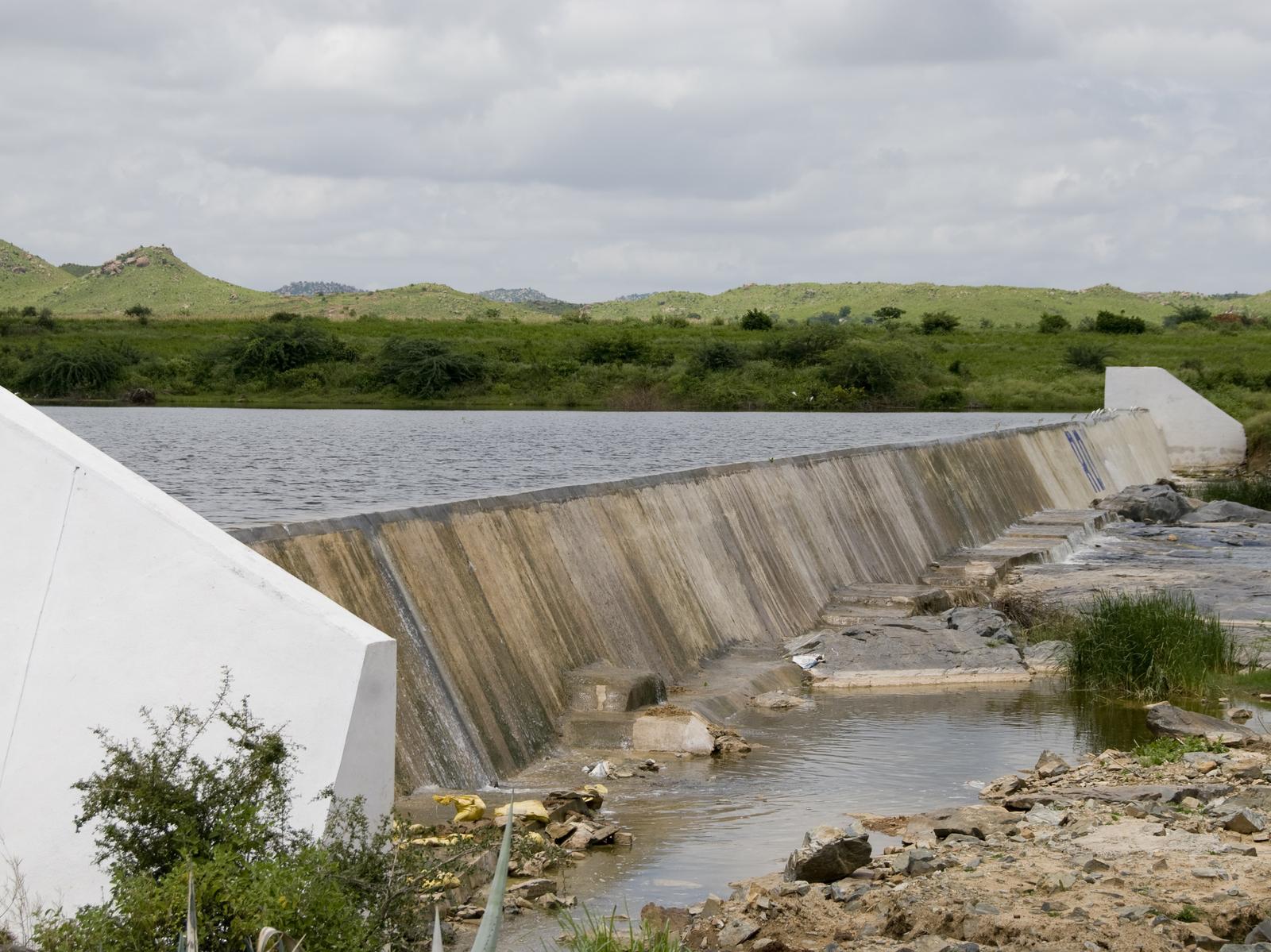
Reservoir built by the We Are Water Foundation, in collaboration with the RDT, in Ganjikunta, India.
© Fundación Vicente Ferrer.
An example of the action to recover the infrastructures is the construction project of a reservoir in Ganjikunta, in the Anantapur district, a structure which is able to store 80,000 m3 of rain water and extend by 25 acres (10.12 ha.) the existing irrigation area. The dammed water allows farmers to overcome the periods of drought between monsoons and to diversify their crops. On the other hand, the stored water, as it filters, allows the regeneration of aquifers that feed the wells of the area with water and improves reforestation, something that is essential to stop the aggressive erosion experienced by the region, which degrades the soil to the extent of turning it unproductive.
The projects to install drip irrigation systems are developed with the philosophy that each drop of water lost during irrigation is a treasure that is lost in the soil. Drip irrigation is the method consisting of taking water to the plant by means of small pipes and applying it drop by drop near the root. This system reduces the loss of water due to filtration and evaporation, and a much greater use of fertilizers: instead of leaving them on the surface near the plant, they are mixed with water and are supplied with each drop to the root, improving the quality of crops.
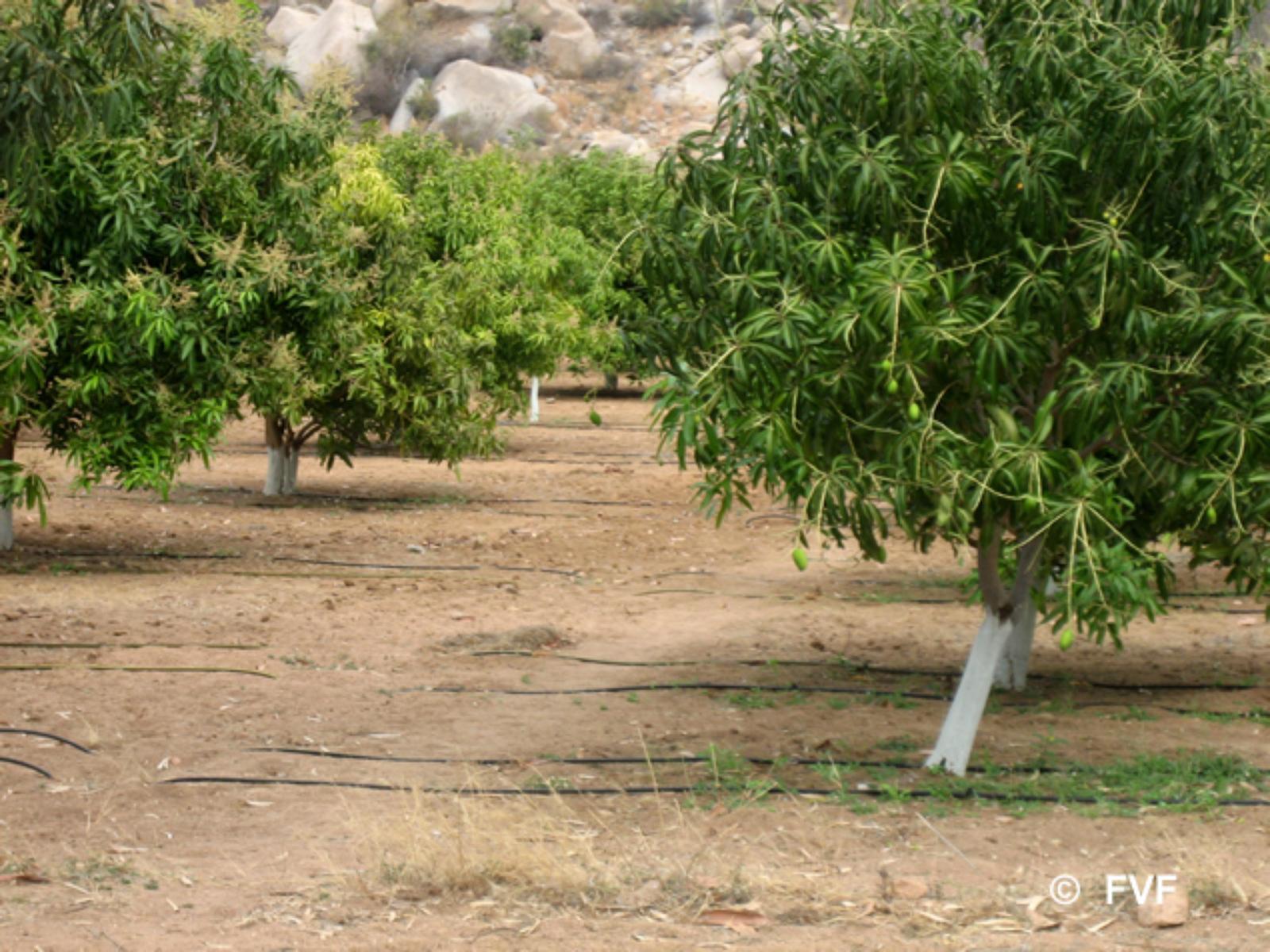
Mango plantation watered with a drip irrigation system developed by the We Are Water Foundation in collaboration with the RDT.
© Fundación Vicente Ferrer
This allows the Anantapur farmers savings in water of up to 75%. Compared to sprinkling or manual irrigation techniques, the drip irrigation system notably improves the survival of the plants that grow in a regular way, making them less vulnerable to plagues.
Rain water collection to resist the rainfall uncertainty and to regenerate aquifers; drip irrigation to avoid the loss of water and to increase the efficiency of crops. Both are necessary solutions that will doubtlessly help India, and the areas with greater climate uncertainty, to face their future. If India saves its aquifers, the rest of the world will also do it.


